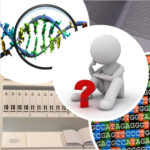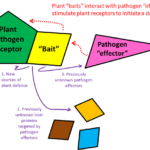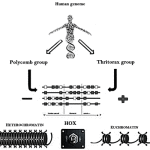Tag Archives: genome
Genome editing in non-dividing cells: new strategies are required
New literacy challenge: genetic knowledge is poor even among well educated
Mitochondrial gene discontinuity that translates into fragmented functional proteins
Genome analysis with near-complete privacy possible
The journey of Campylobacter: a genomic analysis of a successful zoonotic pathogen
Genetic disorders in primary aldosteronism – familial and somatic: an explanatory attempt
Aldosterone is the steroid hormone secreted from the adrenal gland in response to sodium deficiency, blood volume loss or potassium loading. It acts on the kidney and the colon to retain sodium and excrete potassium, in a
Plants versus pathogens: detection and deception
HOX genes: The Rosetta Stone of the human cells biology
Life on sulfur. Why we need complete genomes
Sequence of the plant beneficial biocontrol agent Pseudomonas fluorescens DSM 8569
Pseudomonas represents an abundant bacterial group that can live in the soil. In this habitat many organisms like fungi, bacteria, plants or insects live together, often intensively interacting in close communities. The composition of these communities is
Endospore formation: a mechanism for microbial response to unfavorable environment
Genome sequence of the natural antagonist Pseudomonas fluorescens 2-79 against fungal plant diseases
In agriculture we have to deal with a huge variety of diseases caused by phytopathogenic bacteria, fungi or insects for instance. Many of these plant pathogens live in the soil and attack the respective cultivar at the
Can hypertension and related cardiovascular diseases be caused by Dark-Matter-like RNAs?
Active-state of AT1 receptor attenuates inverse agonism of ARBs through changes in specific ligand-receptor interactions
How to know transcription factors by the company they keep
AMPK: Common mechanism of action linking HIV-1 latency and Hutchinson-Gilford progeria syndrome
A hereditary mutation in Schwartz-Jampel syndrome

Schwartz-Jampel syndrome (SJS) type 1, also known as chondrodystrophic myotonia, is a rare autosomal recessive disorder characterized by short stature, neuromyotonia (sustained contraction of skeletal muscles), chondrodysplasia (abnormal development of the cartilage of long bones), joint contractures,





















